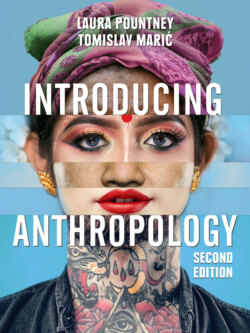Читать книгу Introducing Anthropology - Laura Pountney - Страница 33
Diet and internal organs
ОглавлениеLike chimpanzees and bonobos, humans are omnivorous; this means that humans and chimpanzees kill other animals for food in addition to eating a wide variety of plants. Essentially, the human body is similar to that of the great apes; humans have the same arrangement of internal organs and bones, share several important blood types and suffer from many of the same diseases. However, there is a significant difference in the amount of meat that humans eat compared to chimpanzees. While chimpanzees extract at most 5 to 10 per cent of their calories from animals (including both small monkeys and termites extracted with tools), Homo erectus obtained most energy from meat (either from scavenging or from hunting). This heavy reliance on meat lasted until very recently, when agriculture appeared. There are only a handful of human populations (fewer than fifty across the globe) still able to survive without agriculture: they are known as hunter-gatherers.
omnivorous Ability to eat and survive on both plant and animal matter
hunter-gatherers Members of a nomadic people who live chiefly by hunting and fishing and harvesting wild food
STOP & THINK
What are the advantages of an omnivorous diet?
